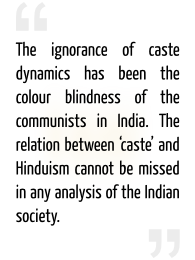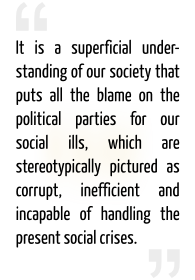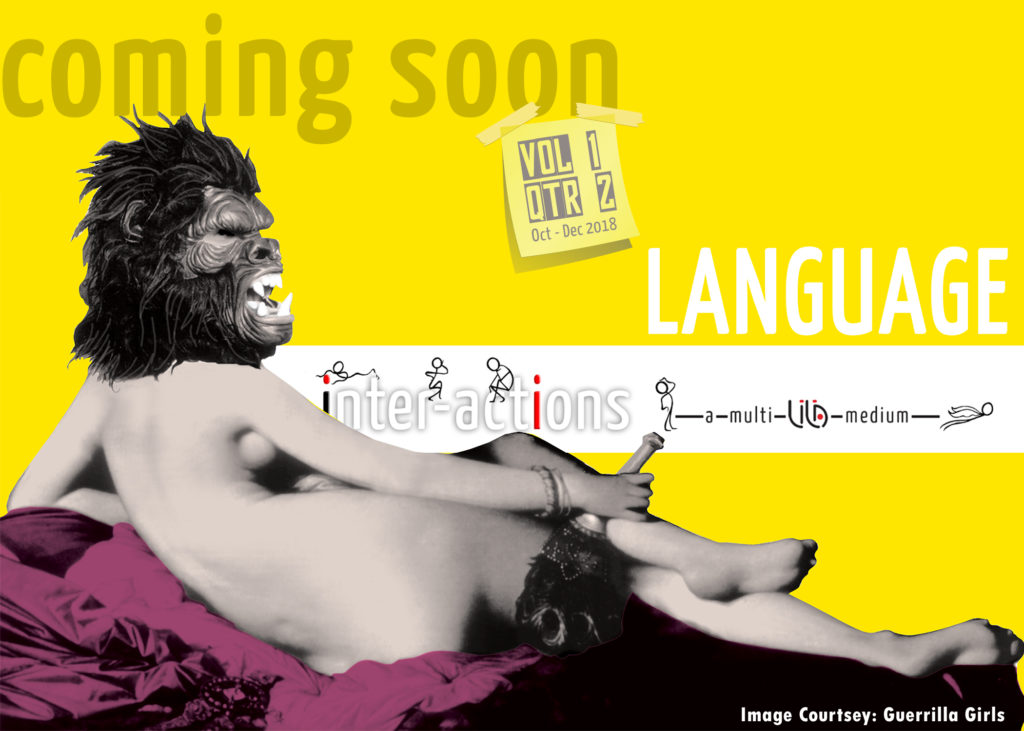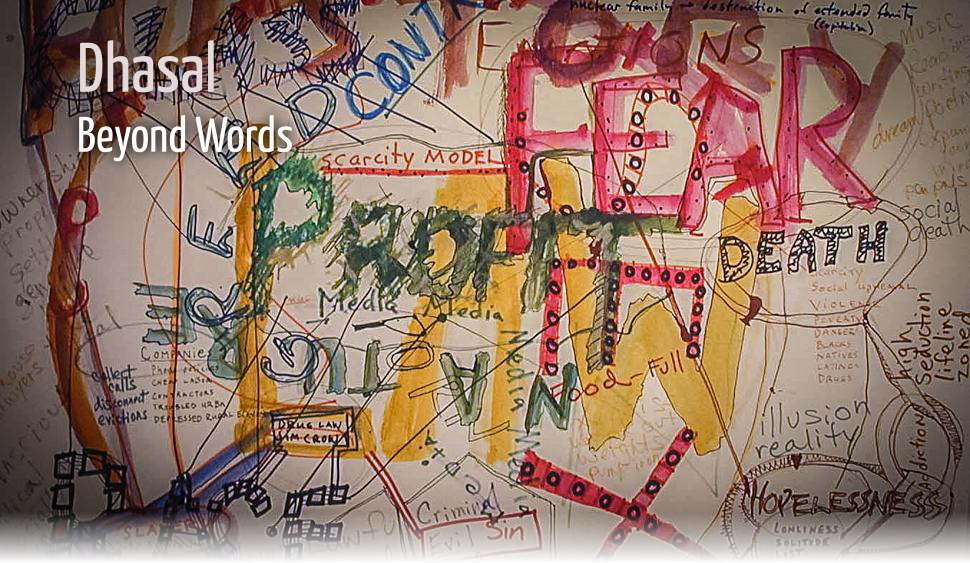
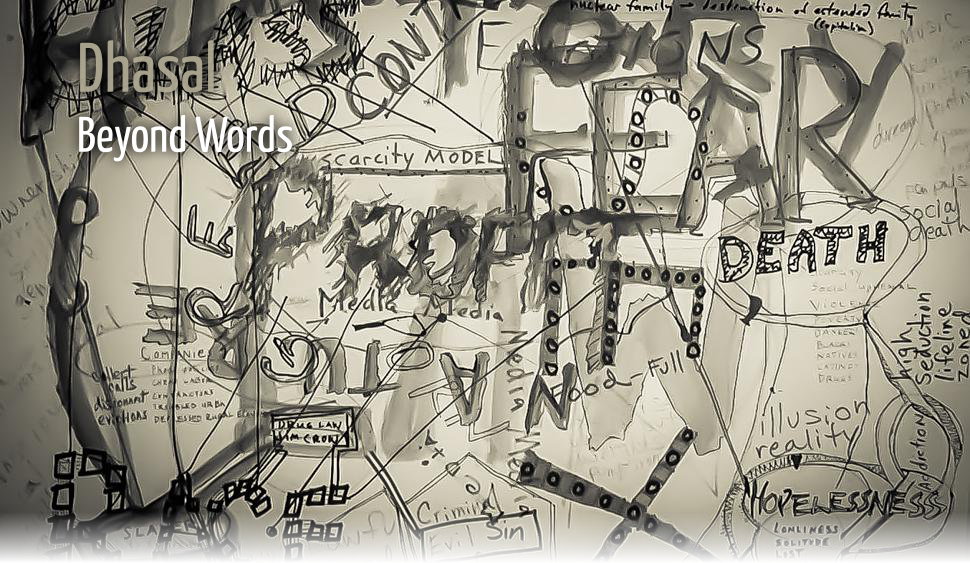
3 February 2014A few weeks ago, Namdeo Dhasal passed away, leaving behind him a heritage that will never cease to be controversial, always frightening the weak-minded. From the Dalit Panther movement to Communism, and later the Shiv Sena, Dhasal was in a tireless search for larger public support to reach his dreams of equality for society. Following the vision of the chief architect of the Indian Constitution, Dhasal went beyond words and partisan political establishments, to call all the oppressed among us ‘Dalits’. In the fourth Inter-actions debate, Sharankumar Limbale recalls the trajectory of the man who was, for him, a determined and isolated visionary, but also one who profoundly influenced the current generation of Dalit politicians. In his response, Shankar N Bagh points out how Communism, the Shiv Sena and even the AAP, with their present preoccupations, are bound to miss the magnificent dream that Dhasal, after Ambedkar, had set out to fulfill for India. |
Hold the cursor on the illustrations to display animations and descriptions.
The Voice of the TempestSharankumar Limbale |
The ‘Dalit’ QuestionShankar N Bagh |
|
From the beginning, Dhasal had been a revolutionary and a liberal. His thoughts were never limited to the caste war. Of course, he was against the caste system, but he stood for the rights of all the oppressed people across time and space. Wherever he had been, from the Dalit Panther to the Shiv Sena, he worked for the cause of the downtrodden. When he roared ‘dalit’, he meant all the oppressed. Orthodox Dalit leaders could not understand Dhasal’s mind or his movement. Initially, for his open views, Dhasal was accused of promoting Communist standpoints—the first of the many attacks he faced in his struggle to extend the meaning of the term ‘dalit’ to cover all fields of human misery. If the Dalit movement had followed the revolutionary path marked by Dhasal, I believe, the Dalit cause would have been much stronger today. But history was meant to be different—the Dalit leaders, at that time, decidedly destroyed the leadership of Dhasal. When I started looking at the Dalit movement closely, I found that it was a race of rats. Everyone was running towards the enclosure of one group or the other. The so-called leaders were not leaders of a movement: they only led their own followers. Dhasal never supported ‘groupism’, though, unfortunately, he too was caged in a group by others, who branded him for good.
Dhasal was a man who found his own way, and he invested his time in discovering it. He wanted to broaden the path of unity; he was always looking for new ways to unite the oppressed from everywhere. When he talked for the cause of all those who were exploited, the Dalit establishment and its leaders were shocked and they turned against him, indicting him of hijacking the Dalit movement. In fact, he antagonized everyone—the Dalit leaders who wanted exclusivity, the communists who defined the classes in solely economic terms, the congressmen who were using the Dalit votes for their own ends. Dhasal’s vision for liberation was akin to Ambedkar’s. His ironical isolation from opportunistic and partisan politics, because he was standing for the cause of the unification of the oppressed, was reminiscent of Ambedkar’s distancing himself from Communism to embrace Buddhism. The Dalit leaders apparently won the game against Dhasal by rendering him an ‘outcaste’.
To think of it, from the beginning, Namdeo Dhasal was by himself, but he was always the voice of the tempest. He never followed old tracks, nor did he ever think in any readymade style. He had a roaring personality. His living style, his writing style, his speaking style, his working style were different from the thousands. He was rare – a real hero of his time. Dhasal was a dream, and we saw it day and night. Because of his writings, so many others began to write. He inspired many poets. Countless Dalit writers tried to imitate him, but no one could reach his height. Through his leadership, many activists launched their own struggles. He was a mine of activism. He loved activists, he loved movement, he loved words. He was the true poet of the rebels of this world. He charged people through his word and his work. He never thought of earning any material wealth. His last days were very painful. He had no means even to get medical treatment. That was Dhasal: the hero of thousands who had no penny even to pay his medical bills. Could this become a lesson for the corrupt leaders of today?
Because of Dhasal and his writing, Dalit literature received worldwide recognition. But Dhasal always invited controversies. When he leaned towards the Shiv Sena, another set of attacks was launched against him. Today, ironically, many dalits are part and parcel of the Shiv Sena and the BJP. When Dhasal decided to support the Shiv Sena, 20 years ago, he was bitterly criticized, but it seems, now, everyone is going that way. Even Ramdas Athawale, the new hero of Dalit politics, is following Dhasal’s old road.
One might wonder why Dhasal decided to show allegiance to the Shiv Sena. Perhaps, it was his nature that prompted him to do so. He was a stormy figure; he hated subordination. A pioneer in the Dalit youth movement of the post-Ambedkar era, he wanted to unite people on a larger scale. He found the attitude of the Congress unacceptable—it advocated secularism and criticised Hindutva, but never treated the dalits equally. So initially, Dhasal thought of Communism as his option. Before him, Babasaheb Ambedkar had started the labour party in 1935, hoping to unite the working class with the Dalits. It was when he realised that this mechanism did not work in India that Babasaheb reorganised his party in 1942 under the new name Scheduled Castes Federation. Soon would he come to encounter yet another sad realisation: the general caste voters would not vote for Dalit candidates, and vice versa. It was with a determination similar to Babasaheb’s to break the stagnation in Indian politics that Dhasal, too, set out to establish his movement. Later, he saw his own movement falling apart. His preferring the Shiv Sena over the others, I believe, was one of his profound experiments to live out his fiery spirit. He said that the Dalits should not ignore the Hindu population, that we should respect progressive Hindus. Dhasal was a dynamic path-finder, but were his efforts in vain? He wanted to counter the ‘congressy’ attitude, and deliberately chose the way of the Shiv Sena. But there too, Dhasal seemed to have failed in his time, though Ramdas Athawale has now chosen the same path after two decades. What does one make of this paradox? Of course, the time has changed. The sentiments of the Dalit people have also undergone changes.
Today, in Maharashtra, large groups of dalits are with the BJP-Shiv Sena. How is this influx affecting those parties? Surely, they are forced to change their strategy about the dalits. To my mind, this certainly has a positive effect on Indian politics, but the stagnation is not over yet. Will the BJP-Shiv Sena win the confidence of the dalits? Will the Congress come to know the true reality of the Dalit community? What may be the political and ideological future of the Dalit movement? Till date, there have been two main streams in Indian politics. One of secularism, as held by the Congress and its allies, and the other of Hindutva, as practised by BJP and its allies. There has been a third front, comprising the various left groups, but that has not been able to come up with any politically effective mobilisation of support. Today, we see a fourth front emerging, in the center, in the form of the Aam Aadmi Party. The increase of corruption in the everyday life of people, the tides of inflation and the spread of violence have all destabilized Indian politics. The burning problems of the people challenge every political party in this country. In this situation, Dalit leaders should alert their community and invite them to go forth in the right direction—the direction that was once given and shown by our great leader Dr. Ambedkar. Today, I remember Dhasal, who had this vision for the future of the Dalit movement. But Dhasal is no more. And without Dhasal, I feel that something invaluable has been lost. 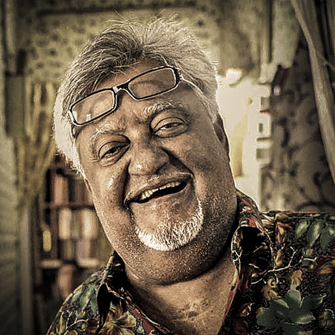 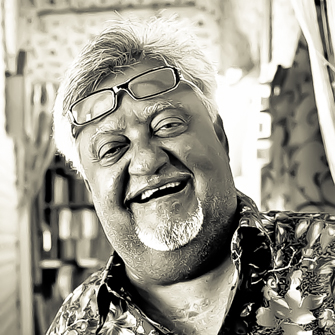 Namdeo Dhasal |
Dhasal appeared at a time when a hug gap was created in the Dalit movement in Maharastra by the death of Ambedkar. Namdeo Dhasal, and the other young Turks of those days, began to express the pain of the dalits’ deplorable situation, through their poetry and public programmes. They insisted that those conditions were deeply linked to the structure of the society as a whole. But Dhasal’s poetry also showed a hope for liberation. That has been the root of his poetic talent: his gift for sharing his experiences. His pen translated for the world, the discrimination, exclusion and inhuman treatments that united the oppressed. Dhasal reads one of his poems on Ambedkar. Dhasal’s vision was that all the oppressed of the world, beyond caste, class, gender and ethnicity markers, should unite to grapple with the ongoing socio-political milieu. He believed that the Dalit movement must strive to build a larger society where there would not be any subordination or exploitation. The biggest challenge for the Dalit movement, according to Dhasal, was to bring all the downtrodden into such a fold. That is probably why he attempted to make alliances with the communists, and with the Shiv Sena at various times.
Dhasal attempted to reach out to the communists to create a united fight against the common enemy, as both his movement and communism defended the poor and the marginalised. We have some lessons to learn from the failure of Dhasal’s experiment. The problem was not in the Communist ideology itself, but in the reductionist Communist readings of the Indian society that ignored the local conditions that existed in the country. The ignorance of caste dynamics has been the colour blindness of the communists in India. The relation between ‘caste’ and Hinduism cannot be missed in any analysis of the Indian society. As Ambedkar rightly pointed out, we could cure the caste system and Indian society only if we first managed to cure Hinduism. Communist movements in India have failed in spite of rightly trying to unite the exploited working class and the marginalised sections under one umbrella, for a larger struggle. As their leadership came from particular dominating sections of the society, it could not read the other side of the situation properly. If at all there is an acknowledgement of this fact today, it is certainly due to the Dalit movement, which has forced the Left front to rethink its policies in India. It was Dhasal who, after Ambedkar, denounced the class-based understanding of the Indian society, and looked for other political options. Limbale defends Namdeo Dhasal for his decision to support the Shiv Sena, in the wake of his realisation of the inadequacies of both Indian communism and the Congress party. He mentions that many dalits are following the same path today. But this explanation does not seem sufficient to make sense of the direction of the Dalit movement today. It is not unknown to the world that the Shiv Sena operates on a fascist ideology. It wants to establish a Hindu country by preserving all the values and norms legitimising the inhuman treatment of the dalits and minorities. If people of his stature, the founders and leaders of the Dalit movement, legitimise the perpetrators of violence, then what would happen to the movement? 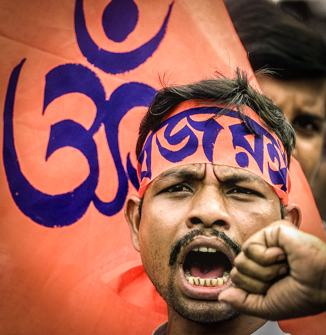 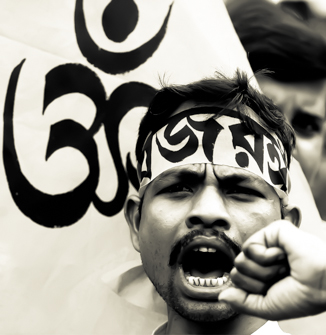 Towards the end of his contribution, Sharankumar Limbale mentions AAP, though he does not make it clear if AAP could be a a possible future ally of the Dalit movement. When we see the AAP pledge to fight against corruption, and their effort to bring better governance, it seems that this is a wonderful idea, finally addressing the ongoing social problems.
But when we critically engage with the Dalit question, it reveals a very serious flaw in our understanding of Indian society. The most important issue concerns the structural problem related with castes. The major resources of the society are being managed by minority populations. This is true, not only of the economic capital, but also of politics, governances, media, civil society and many other areas. Democratic India exists only in the files, while the elite can do or buy everything. So, it is a superficial understanding of our society that puts all the blame on the political parties for our social ills, which are stereotypically pictured as corrupt, inefficient and incapable of handling the present social crises. This does not mean that our politics is corruption-free, though. The real problem lies in the fact that our social set up is inherently unequal, based on an exploitative, hierarchical social order. The present Indian society is undergoing a phase of disorder and confusion. The Indian state, self-proclaimed largest democracy of the world, is not able to protect its helpless citizens who are marginalized and deprived. We say that the state gets its power from the people, but the people are powerless once the election is over. The political class, across parties, has failed to live up to the expectations of the people. Muscle and money are the most powerful weapon and they rule society. Indian society claims itself as a nation, but it counts many nations within it. It is not really one state defending all its citizens. In the name of tradition, the state nurtures various primordial organisations like the Khap, who kill dalits if they deviate from the official religious and caste-based prescriptions. When dalit girls are raped in Haryana, Maharastra, UP, Bihar, or West Bengal, the news does not reach the ears of the upper caste populations. When the dalits are killed, tortutured, and their houses burnt, it fails to make any impact in the heart of the indifferent upper caste communities. Dalits struggle to understand how their fellow countrymen can stay indifferent when their daughters and wives of the Bhotmange family of Khairanjali were paraded naked, raped and killed in front of the villagers. Why did crowds not pour into the streets to protest, like in December 2012? Why did not the dalits from Mirchpur, Haryana get attention of the media and the civil society, like the Muzaffarnagar riots victims who were in very similar conditions? Ambedkar had stressed on social democracy over political democracy. It is concerned with the relationship among individuals, where there is a sense of fraternal feeling among fellow citizens. 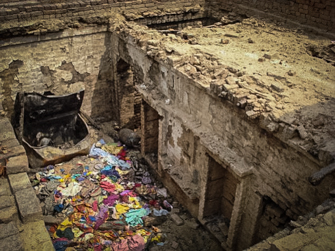 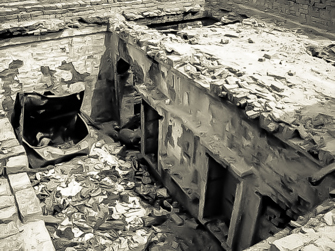 A burnt house, in Mirchpur, Haryana. If India has to emerge as a nation, the higher castes have to become highly sensitive in understanding what being a Dalit in the Brahminic social order means. They have to be more reflective, to capture the feeling of the dalits when they come to the street demanding justice for rapes, mass murders, or the burning of their houses. Similarly, the dalit leadership has to engage with the Left, for the assaults of capitalism will not spare them as well. It should not forget that the dalits also work as labourers, that they are moved by the state for various industrial purposes, along with poor tribals. The Left should come to reflect on caste as the material reality of the Indian society. In India, one cannot deal with capitalism without dealing with Brahminism. Left intellectuals have to come out of the theoretical understanding of inequality as found in their books, to see the empirical reality of the Indian field. As for the impatient, sensation-seeking public that has emerged through the recent political events, it must keep in mind that every citizen must build a critical and holistic understanding about the state and society that India is. The Dalit movement has to take help from all like-minded people and movements in its journey to make an egalitarian society based on liberty, equality and fraternity. |
|
Sharankumar Limbale is a Marathi poet, author and literary critic. His 40 books include the autobiography Akkarmashi (1984), translated in English as The Outcaste, and Towards an Aesthetics of Dalit Studies (2004). At present, he is Professor and Regional Director of the Yashwantrao Chavan Maharashtra Open University, Nashik.
|
Shankar N Bagh, inspired by the masters of social sciences, is currently exploring the dialectics of religion and modernity in the south-eastern part of India, for his doctoral research at the Centre for the Study of Social Systems, JNU, New Delhi. Shankar has done extensive research on the religio-political aspects of Mahima Dharma in the state of Odisha.
|
Disclaimers: The opinions expressed by the writers are their own. They do not represent their institutions’ view.
LILA Inter-actions will not be responsible for the views presented.
The images and the videos used are only intended to provide multiple perspectives on the fields under discussion.
Images courtesy: Cast Out Caste | Dilip Chitre for Outlook India | Frontline | Garhwal Post | Jayanta Shaw for Reuters | The Hindu
Video courtesy: Ibn Lokmat
Share this debate… |
… follow LILA… |
||||

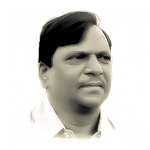 The passing of Namdeo Dhasal was a shock for me. This man’s absence would indeed hurt Dalit literature as well as the Dalit movement in more profound ways than what meets the eye. For the same reason, this also seems an apt time for a deep reflection on the Dalit question and the future of the movement.
The passing of Namdeo Dhasal was a shock for me. This man’s absence would indeed hurt Dalit literature as well as the Dalit movement in more profound ways than what meets the eye. For the same reason, this also seems an apt time for a deep reflection on the Dalit question and the future of the movement.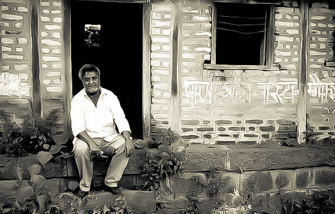
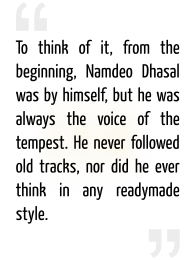
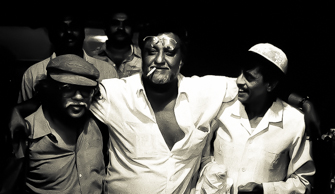
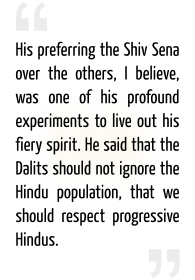
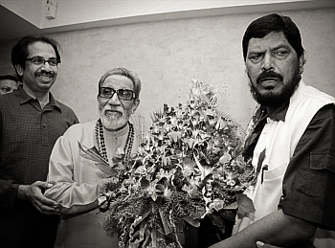
 The demise of Namdeo Dhasal has come with an offering to us. It seems, this is our great chance to take a critical look at the Dalit movement today. More importantly, his absence is impelling us to reflect on the complex dynamics of the Indian society at large. The reason: Namdeo Dhasal’s life has always been an open book revealing the complex workings of the society of his times. And after his passing, his story indeed highlights why biography has to be located in and read from particular historical moments.
The demise of Namdeo Dhasal has come with an offering to us. It seems, this is our great chance to take a critical look at the Dalit movement today. More importantly, his absence is impelling us to reflect on the complex dynamics of the Indian society at large. The reason: Namdeo Dhasal’s life has always been an open book revealing the complex workings of the society of his times. And after his passing, his story indeed highlights why biography has to be located in and read from particular historical moments.